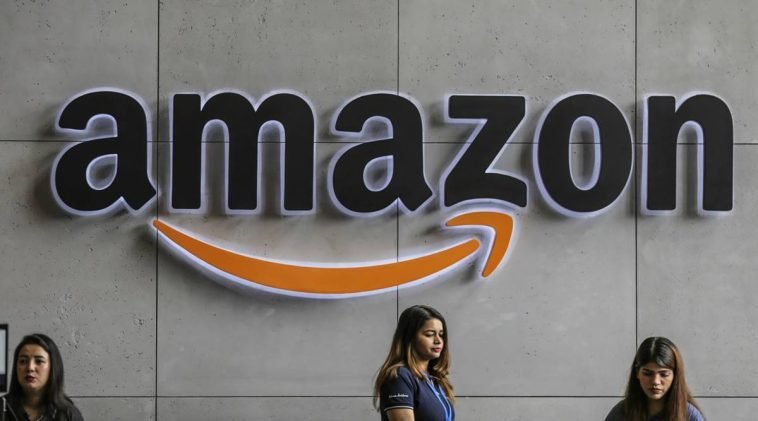Introduction.
Selling on Amazon is one of the best ways to start or expand an e-commerce business. With its vast reach and established reputation, Amazon connects sellers to millions of customers worldwide.
If you’re considering selling in Europe through Amazon FBA (Fulfilled by Amazon), you’re stepping into a highly lucrative market.
But selling in Europe comes with unique challenges and opportunities that require a clear understanding to succeed.
This guide breaks down everything you need to know about selling on Amazon FBA in Europe. From setting up your account to navigating tax requirements and handling logistics, I’ll cover all the essentials to help you get started smoothly.
Why Europe? The Potential of Amazon FBA
Europe is one of Amazon’s fastest-growing markets, with countries like Germany, the UK, France, Spain, and Italy leading the charge.
In 2022, Amazon’s European sales reached $52 billion, and that number continues to grow. Selling in Europe allows you to tap into this booming market while expanding your brand internationally.
Amazon FBA makes selling here even easier by handling storage, shipping, and customer service on your behalf.
This means you can focus on growing your business while Amazon takes care of the operational heavy lifting.
How Do I Sell on Amazon FBA in Europe?
1. Set Up Your Seller Account
To sell in Europe, start by registering for an Amazon Europe Seller Account. Amazon offers a Unified European Market Account, which allows you to sell in all five major European marketplaces (UK, Germany, France, Italy, and Spain) with a single account.
How to Register:
- Go to Amazon Seller Central.
- Choose the “Sell in Europe” option.
- Provide your business details, including your VAT registration number (more on this below).
2. Understand VAT Requirements
One of the most important steps in selling in Europe is understanding Value Added Tax (VAT). Each European country has its own VAT rate, and as a seller, you’re required to register for VAT in any country where you store inventory.
For example:
- Germany: 19%
- UK: 20%
- France: 20%
Amazon provides tools like the VAT Calculation Service to simplify this process, but you might want to work with a tax advisor to ensure compliance.
3. Choose Your Fulfillment Strategy
You have two main options when selling in Europe:
- EFN (European Fulfillment Network): You store your products in one European country, and Amazon ships to customers across Europe.
- Pan-European FBA: Amazon stores your inventory in multiple fulfilment centres across Europe, allowing faster delivery to customers.
Tip: If you’re just starting, EFN is often easier to manage. Once your sales grow, switching to Pan-European FBA can save costs and improve delivery times.
4. Prepare Your Products for the European Market
Each European country has its language, culture, and customer preferences. To succeed, you need to:
- Translate product listings into the local language (e.g., German for Germany, French for France).
- Adapt product descriptions to fit local buying habits.
- Ensure your products comply with European safety and labelling regulations.
5. List Your Products
Once you’ve prepared your products, create product listings in the local marketplaces. Use clear and professional photos, write detailed descriptions, and include keywords relevant to each market. Tools like Amazon Keyword Research can help you identify what buyers are searching for in different countries.
6. Ship Your Inventory
When sending inventory to Amazon’s European fulfillment centers, follow Amazon’s packaging and shipping guidelines.
You can ship products directly from your manufacturer (if you’re sourcing internationally) or from your local warehouse.
Pro Tip: Amazon partners with carriers like UPS and DHL for discounted rates on shipments to their fulfilment centres.
7. Promote and Optimize Your Listings
To stand out on Amazon, take advantage of its advertising options:
- Sponsored Products: Show your products at the top of search results.
- Coupons and Deals: Attract more customers by offering discounts.
Regularly analyze your performance metrics using Seller Central and optimize listings for better visibility.
Common Challenges and How to Overcome Them
1. Navigating VAT and Tax Laws
Dealing with VAT across multiple countries can feel overwhelming, especially when you’re new. Consider using Amazon’s VAT Services or hiring a professional tax advisor to handle registration and filing.
2. Language Barriers
Selling in Europe means dealing with multiple languages. Use professional translation services to ensure your listings are accurate and appealing to local customers.
3. Shipping Costs
Shipping across Europe can be expensive, especially if you don’t plan your logistics well. Start with EFN to keep costs manageable, and explore Pan-European FBA as your sales grow.
FAQs
1. Do I need to register for VAT in every European country?
You need to register for VAT in any country where you store inventory or meet the local sales threshold. For example, if you store products in Germany, you must register for German VAT.
2. Can I sell in Europe without speaking the local languages?
Yes, but translating your listings is essential for success. Amazon offers language translation services for sellers, or you can hire freelance translators.
3. Is Pan-European FBA worth it?
Pan-European FBA is great for faster delivery and lower shipping costs, but it requires VAT registration in multiple countries. Start with EFN to test the market, then switch as your business grows.
4. How much does it cost to sell on Amazon FBA in Europe?
Amazon charges referral fees (usually 8–15% of the sale price) and FBA fees for storage and fulfillment. The exact cost depends on your product category and fulfillment strategy.
5. Can I start small?
Absolutely. Amazon FBA is perfect for testing the waters with a small inventory. As you learn the market, you can scale up gradually.
Conclusion
Selling on Amazon FBA in Europe can open up incredible opportunities for your business. From accessing a massive customer base to leveraging Amazon’s robust infrastructure, the benefits are clear.
While there are challenges like VAT compliance and logistics, they’re manageable with the right preparation and support.
So, are you ready to take your e-commerce business to the next level by tapping into the European market? If you’re considering it, what’s holding you back from starting today?





GIPHY App Key not set. Please check settings